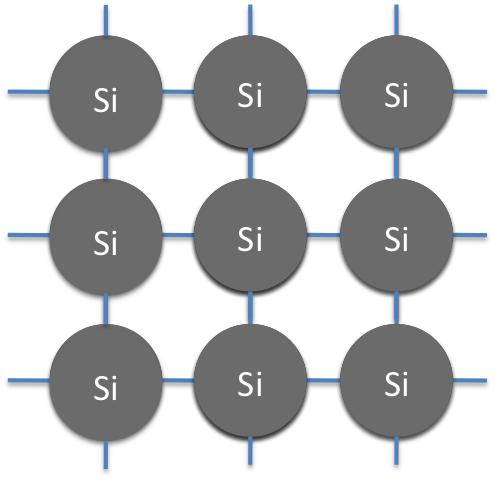

علم الكيمياء

تاريخ الكيمياء والعلماء المشاهير

التحاضير والتجارب الكيميائية

المخاطر والوقاية في الكيمياء

اخرى

مقالات متنوعة في علم الكيمياء

كيمياء عامة


الكيمياء التحليلية

مواضيع عامة في الكيمياء التحليلية

التحليل النوعي والكمي

التحليل الآلي (الطيفي)

طرق الفصل والتنقية


الكيمياء الحياتية

مواضيع عامة في الكيمياء الحياتية

الكاربوهيدرات

الاحماض الامينية والبروتينات

الانزيمات

الدهون

الاحماض النووية

الفيتامينات والمرافقات الانزيمية

الهرمونات


الكيمياء العضوية

مواضيع عامة في الكيمياء العضوية

الهايدروكاربونات

المركبات الوسطية وميكانيكيات التفاعلات العضوية

التشخيص العضوي

تجارب وتفاعلات في الكيمياء العضوية


الكيمياء الفيزيائية

مواضيع عامة في الكيمياء الفيزيائية

الكيمياء الحرارية

حركية التفاعلات الكيميائية

الكيمياء الكهربائية


الكيمياء اللاعضوية

مواضيع عامة في الكيمياء اللاعضوية

الجدول الدوري وخواص العناصر

نظريات التآصر الكيميائي

كيمياء العناصر الانتقالية ومركباتها المعقدة


مواضيع اخرى في الكيمياء

كيمياء النانو

الكيمياء السريرية

الكيمياء الطبية والدوائية

كيمياء الاغذية والنواتج الطبيعية

الكيمياء الجنائية


الكيمياء الصناعية

البترو كيمياويات

الكيمياء الخضراء

كيمياء البيئة

كيمياء البوليمرات

مواضيع عامة في الكيمياء الصناعية

الكيمياء الاشعاعية والنووية
Semiconductors Silicon
المؤلف:
........
المصدر:
LibreTexts Project
الجزء والصفحة:
............
4-11-2018
1660
Semiconductors
Semiconductors are unique materials that have neither the electrical conductivity of a conductor nor of an insulator. Semiconductors lie somewhere in between these two classes giving them a very useful property. Semiconductors are able to manipulate electric current. They are used to rectify, amplify, and switch electrical signals and are thus integral components of modern day electronics.
Semiconductors can be made out of a variety of materials, but the majority of semiconductors are made out of silicon. But semiconductors are not made out of silicates, or silanes, or silicones, they are made out pure silicon, that is essentially pure silicon crystal. Like carbon, silicon can make a diamond like crystal. This structure is called a silicon lattice. (see Figure 1) Silicon is perfect for making this lattice structure because its four valence electrons allow it too perfectly bond to four of its silicon neighbors.

Figure 1: an example of a silicon lattice
However, this silicon lattice is essentially an insulator, as there are no free electrons for any charge movement, and is therefore not a semiconductor. This crystalline structure is turned into a semiconductor when it is doped. Doping refers to a process by which impurities are introduced into ultra pure silicon, thereby changing its electrical properties and turning it into a semiconductor. Doping turns pure silicon into a semiconductor by adding or removing a very very small amount of electrons, thereby making it neither an insulator nor a conductor, but a semiconductor with limited charge conduction. Subtle manipulation of pure silicon lattices via doping generates the wide variety of semiconductors that modern day electrical technology requires.
Semiconductors are made out of silicon for two fundamental reasons. Silicon has the properties needed to make semiconductors, and silicon is the second most abundant element on earth.
 الاكثر قراءة في الجدول الدوري وخواص العناصر
الاكثر قراءة في الجدول الدوري وخواص العناصر
 اخر الاخبار
اخر الاخبار
اخبار العتبة العباسية المقدسة

الآخبار الصحية















 قسم الشؤون الفكرية يصدر كتاباً يوثق تاريخ السدانة في العتبة العباسية المقدسة
قسم الشؤون الفكرية يصدر كتاباً يوثق تاريخ السدانة في العتبة العباسية المقدسة "المهمة".. إصدار قصصي يوثّق القصص الفائزة في مسابقة فتوى الدفاع المقدسة للقصة القصيرة
"المهمة".. إصدار قصصي يوثّق القصص الفائزة في مسابقة فتوى الدفاع المقدسة للقصة القصيرة (نوافذ).. إصدار أدبي يوثق القصص الفائزة في مسابقة الإمام العسكري (عليه السلام)
(نوافذ).. إصدار أدبي يوثق القصص الفائزة في مسابقة الإمام العسكري (عليه السلام)


















